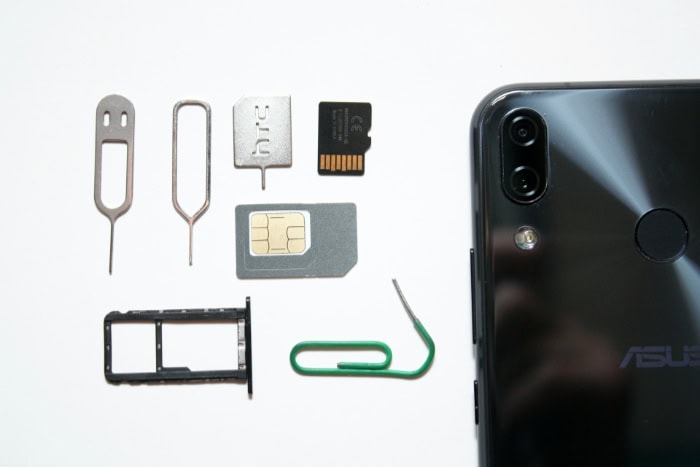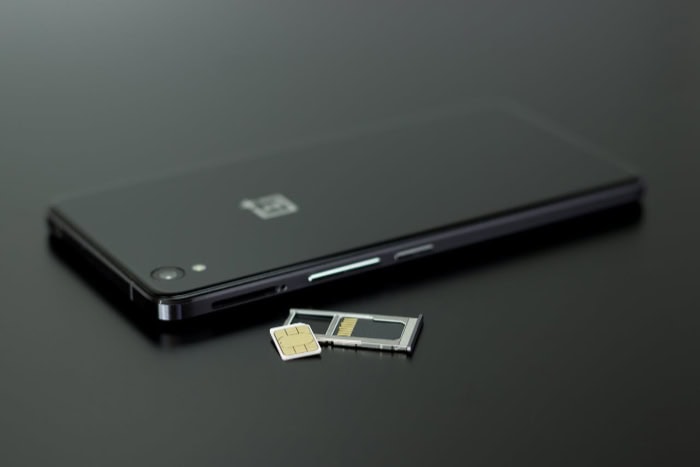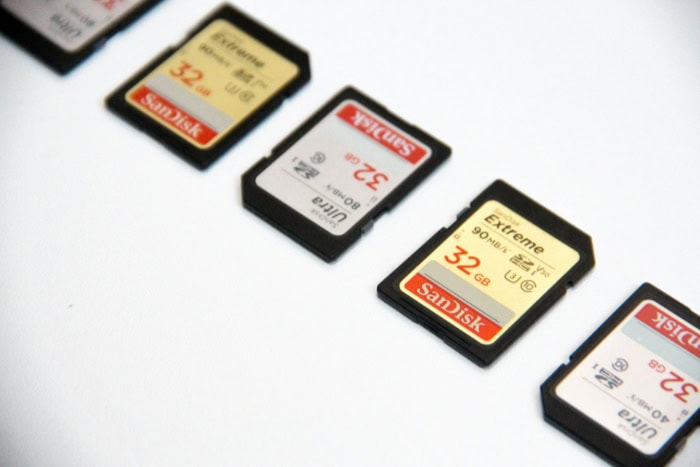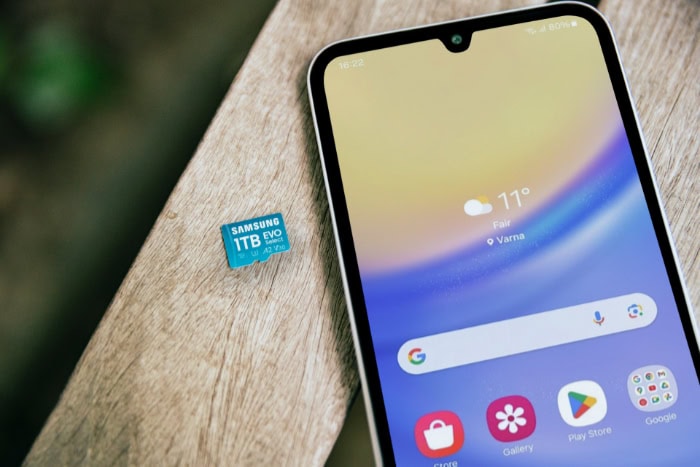SIM Card vs. SD Card: What’s the Difference?

Mobile technology relies on two small but mighty components: SIM cards and SD cards. These miniature marvels, often confused due to their similar acronyms, play vastly different roles in our devices.
SIM cards are the passports to cellular networks, enabling calls, texts, and mobile data. SD cards, on the other hand, serve as expandable storage lockers, housing our photos, videos, and files.
Physical Characteristics
SIM cards and SD cards, despite their similar sizes, have distinct physical characteristics that set them apart. These differences in form factors, materials, and construction contribute to their unique roles in mobile devices.
Form Factors
SIM cards come in three main sizes: Standard, Micro, and Nano. The Standard SIM card, measuring 25mm x 15mm, was the original size used in early mobile phones.
As devices became smaller and sleeker, the Micro SIM (15mm x 12mm) and Nano SIM (12.3mm x 8.8mm) were introduced. These smaller sizes allowed for more compact phone designs while maintaining the same functionality.
SD cards also have various sizes, including Standard, Mini, and Micro. Standard SD cards (32mm x 24mm) are the largest and are commonly used in digital cameras and laptops.
Mini SD cards (21.5mm x 20mm) and Micro SD cards (15mm x 11mm) are smaller and more suitable for mobile devices. Many smartphones and tablets feature Micro SD card slots for expandable storage.
Both SIM and SD cards have specific physical designs and contact points that ensure proper connection with the device. SIM cards have a small chip on one side that contains the card's information and connects to the phone's SIM reader.
SD cards have a row of metal contacts that connect to the device's SD card reader.
Material and Construction
SIM and SD cards are built to withstand frequent handling and usage. They are typically made of durable materials such as plastic or metal, with the contact points often plated with gold to prevent corrosion and ensure reliable connections.
The internal components of these cards are designed for their specific purposes. SIM cards contain a small microchip that stores subscriber information and authentication keys.
SD cards have flash memory chips that allow for data storage and retrieval.
To protect the delicate contact points, both SIM and SD cards often have a protective cover or a locking mechanism that prevents accidental damage or loss. Some SD cards also have a write-protection switch to prevent unintentional data erasure.
Primary Functions

While SIM cards and SD cards share similar physical characteristics, their primary functions differ significantly. SIM cards are essential for connecting to mobile networks, while SD cards focus on expanding storage capacity and managing files on mobile devices.
SIM Card Core Purpose
The core purpose of a SIM card is to enable mobile network authentication, subscriber identification, and access to carrier services. When inserted into a mobile device, the SIM card communicates with the network to verify the user's identity and grant access to the subscribed services.
Mobile network authentication is a critical function of SIM cards. They store a unique identifier called the International Mobile Subscriber Identity (IMSI), which is used to authenticate the user on the network.
This authentication process ensures that only authorized users can access the network and prevents fraudulent activities.
SIM cards also store subscriber identification information, such as the user's phone number and contact list. This information is tied to the user's account and can be transferred to a new device by simply moving the SIM card.
Additionally, SIM cards are linked to the user's carrier services and billing. They store information about the user's subscription plan, including data allowances, call minutes, and text message limits.
This information is used by the carrier to provide the appropriate services and generate accurate billing statements.
SD Card Core Purpose
The primary function of an SD card is to provide additional data storage capacity for mobile devices. As smartphones and tablets have evolved to capture high-quality photos, videos, and store large applications, the need for expandable storage has grown.
SD cards offer a convenient way to increase a device's storage capacity without upgrading the device itself. Users can store various types of files on an SD card, including documents, music, videos, and application data.
This allows users to free up internal device storage and carry their files with them easily.
Efficient file management is another core purpose of SD cards. Users can organize their files into folders, making it easier to locate and access specific data.
SD cards also make it simple to transfer files between devices, such as from a smartphone to a computer or vice versa.
Media storage and transfer are particularly important uses for SD cards. High-resolution photos and videos can quickly consume a device's internal storage, making SD cards an ideal solution for media-heavy users.
SD cards allow users to store large media files externally and access them seamlessly on their devices.
Technical Specifications

Beyond their physical characteristics and primary functions, SIM cards and SD cards have distinct technical specifications that define their capabilities and performance. These specifications include memory capacity, security features, network protocols, storage classifications, speed classes, and file systems.
SIM Card Technology
SIM cards have evolved to incorporate advanced technologies that enhance their functionality and security. Modern SIM cards have varying memory capacities, typically ranging from 32KB to 256KB.
This memory is used to store subscriber information, contacts, and text messages.
Security is a critical aspect of SIM card technology. SIM cards employ encryption and authentication mechanisms to protect user data and prevent unauthorized access.
They use algorithms such as A3 and A8 for authentication and encryption, respectively. Additionally, SIM cards have a unique identifier called the Integrated Circuit Card Identifier (ICCID), which is used for identification and tracking purposes.
SIM cards also support various network protocols, enabling them to communicate with mobile networks. The most common protocols are Global System for Mobile Communications (GSM), Universal Mobile Telecommunications System (UMTS), and Long-Term Evolution (LTE).
These protocols define how the SIM card interacts with the network for authentication, data transfer, and voice calls.
SD Card Technology
SD card technology focuses on storage capacity, speed, and compatibility. SD cards come in different storage classifications, such as Standard Capacity (SDSC), High Capacity (SDHC), and Extended Capacity (SDXC).
SDSC cards have capacities up to 2GB, while SDHC cards range from 4GB to 32GB. SDXC cards offer even higher capacities, typically starting at 64GB and reaching up to 2TB.
Speed is another crucial factor in SD card technology. SD cards are classified into different speed classes, which indicate their minimum write speeds.
Class 2 cards have a minimum write speed of 2MB/s, while Class 10 cards offer a minimum of 10MB/s. Higher speed classes, such as UHS (Ultra High Speed) and Video Speed Class, are designed for demanding applications like 4K video recording and high-speed continuous shooting.
SD cards use various file systems to organize and store data. The most common file systems are FAT32 and exFAT.
FAT32 is widely supported but has a maximum file size limit of 4GB. exFAT, on the other hand, supports larger file sizes and is suitable for high-capacity SD cards.
Some devices may require formatting the SD card with a specific file system for optimal performance and compatibility.
Device Compatibility

Device compatibility is a crucial aspect to consider when using SIM cards and SD cards. Both types of cards have specific requirements and considerations that affect their integration with various devices.
SIM Card Integration
SIM card integration involves several factors, including phone requirements, network compatibility, and regional considerations. Modern smartphones are designed to accommodate specific SIM card sizes, with most current models using Nano SIM cards. However, older devices may require Micro or Standard SIM cards.
Some phones feature dual SIM slots, allowing users to use two different phone numbers or network providers simultaneously.
Network compatibility is another essential aspect of SIM card integration. Different mobile networks use various technologies, such as GSM, CDMA, or LTE.
Phones must support the network technology used by the SIM card's carrier to function correctly. For example, a GSM-only phone will not work with a CDMA network SIM card.
Regional considerations also play a role in SIM card integration. Some countries use different frequency bands for their mobile networks, which can affect phone compatibility.
Additionally, certain regions may have restrictions on the use of foreign SIM cards or require registration of devices with local authorities.
When traveling internationally, users should check if their phone is unlocked and compatible with local networks. Many carriers offer international roaming services, but using a local SIM card can often be more cost-effective for extended stays.
SD Card Integration
SD card integration varies depending on device support, operating system compatibility, and installation locations. Not all mobile devices support external SD cards, with some manufacturers opting for fixed internal storage.
Users should check their device specifications to determine if SD card expansion is possible.
Device support for SD cards extends beyond smartphones and tablets. Digital cameras, laptops, gaming consoles, and even some smart TVs can utilize SD cards for storage expansion or data transfer.
However, the supported SD card types and capacities may differ between devices.
Operating system compatibility is another factor in SD card integration. While most modern operating systems recognize SD cards automatically, some may require additional drivers or formatting.
Android devices typically offer seamless SD card support, allowing users to store apps, media, and files on the card. iOS devices, on the other hand, do not support external SD cards, relying instead on internal storage and cloud services.
Installation locations for SD cards vary depending on the device. In smartphones and tablets, the SD card slot is often located near the SIM card slot or under the battery cover.
Some devices feature a dedicated SD card tray that can be accessed without removing the battery. Laptops and cameras usually have easily accessible SD card slots on the side or front of the device.
It's important to note that some devices may require the SD card to be formatted before use. This process erases all data on the card, so users should back up any important files before formatting.
Additionally, users should follow the proper ejection procedures when removing an SD card to prevent data corruption or loss.
Usage and Management

Proper usage and management of SIM cards and SD cards are essential for maximizing their benefits and ensuring smooth operation of mobile devices.
SIM Card Operations
SIM card operations involve several processes that enable users to set up and manage their mobile connectivity effectively. The first step in using a new SIM card is activation and setup.
This typically involves inserting the SIM card into the device and following the carrier's activation instructions. Users may need to call a specific number, visit the carrier's website, or use a dedicated app to complete the activation process.
Once activated, the SIM card allows the device to connect to the mobile network and access voice, text, and data services.
Contact management is another important aspect of SIM card operations. Many users store their contacts directly on the SIM card, which allows for easy transfer of contact information when switching devices.
However, modern smartphones often store contacts in the device's internal memory or cloud services for enhanced features and backup capabilities. Users can manage their contacts by adding, editing, or deleting entries through their device's contacts app.
Some devices also offer the option to import or export contacts between the SIM card and the phone's memory.
Network settings play a crucial role in SIM card operations. These settings determine how the device connects to the mobile network and can affect call quality, data speeds, and roaming capabilities.
Users can access network settings through their device's menu to adjust options such as preferred network type (e.g., 4G, 5G), data roaming, and carrier selection. In some cases, users may need to manually enter Access Point Name (APN) settings provided by their carrier to enable data connectivity.
SD Card Operations
SD card operations focus on managing and optimizing the additional storage provided by these cards. One of the primary operations is data transfer, which involves moving files between the device's internal storage and the SD card.
Users can transfer data through various methods, including using the device's file manager app, connecting the device to a computer via USB, or using wireless transfer apps. Some devices allow users to set the SD card as the default storage location for photos, videos, and downloads, automatically saving new files to the card.
Storage optimization is crucial for maintaining the performance of both the device and the SD card. Users should regularly review and delete unnecessary files to free up space.
Many devices offer built-in storage analysis tools that help identify large files or unused apps taking up space. Additionally, users can move less frequently used apps or media files to the SD card to free up internal storage.
However, it's important to note that moving apps to the SD card may affect their performance, so critical apps should remain on internal storage.
Backup procedures are essential for protecting data stored on SD cards. Users should regularly back up important files to cloud storage services or a computer to prevent data loss in case of card failure or device loss.
Many devices offer automatic backup options that can be configured to include SD card contents. For manual backups, users can connect their device to a computer and copy files directly from the SD card.
It's also advisable to periodically check the SD card's health using built-in tools or third-party apps to detect any potential issues before they lead to data loss.
Conclusion
SIM cards and SD cards play vital roles in modern mobile devices, each serving distinct purposes. SIM cards enable network connectivity, user authentication, and access to carrier services.
SD cards expand storage capacity, allowing users to manage files and media efficiently. Their physical characteristics, technical specifications, and device compatibility considerations differ significantly.
Proper usage and management of both card types optimize device performance and user experience. Familiarity with activation procedures, data transfer methods, and backup strategies ensures smooth operation and data security.
As mobile technology advances, these small yet powerful components continue to enhance our digital lives, providing seamless connectivity and ample storage for our ever-growing digital needs.


